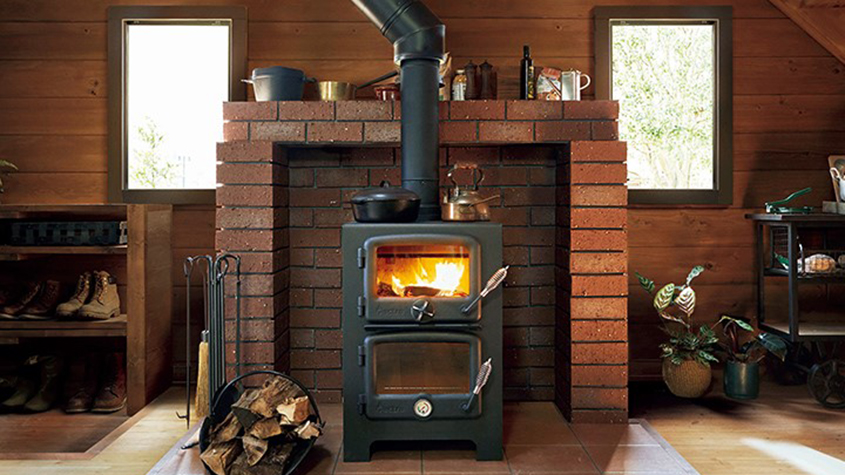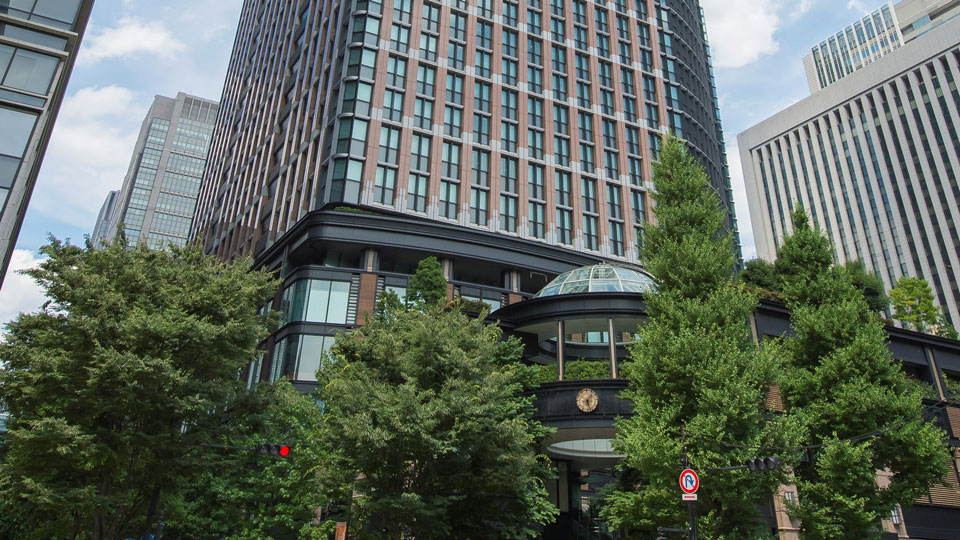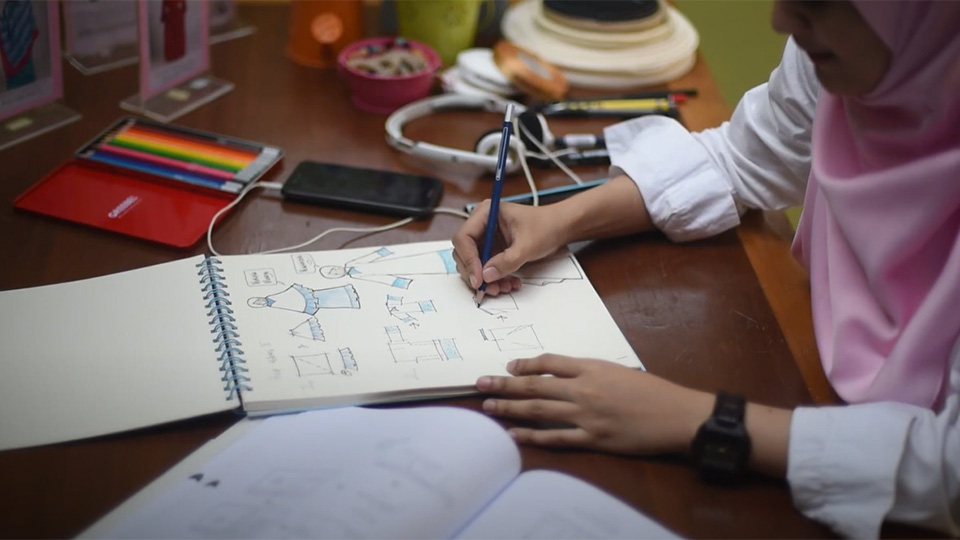Intellectual property protection provides solid foundation for R. C. Core, Japan’s foremost log house construction company
What makes a house a home? For R. C. Core Co., Ltd., a Japanese construction company, “the value of a house is determined by how much you can enjoy your life.” Guided by this belief, R. C. Core design, manufacture and sell unique wooden houses under the brand BESS.
Founded in 1985, today R. C. Core commands an impressive 60 per cent of Japan’s log house market through its BESS brand. The company has 40 stores across the country and has built more than 20,000 houses. It has also established a loyal following of customers who appreciate the company’s focus on craftsmanship and natural building materials and share its philosophy that “a house is a tool for enjoying life.”

Copycat log house designs prompt intellectual property protection
When R. C. Core began selling log houses in 1986, the company found themselves alone in a small market. The unique design and engineering requirements of constructing log houses proved a significant barrier to potential competitors. The resulting lack of copycat designs and counterfeit products meant that protecting its intellectual property was not a priority for the company for many years.
This changed in January 2004, when R. C. Core began selling a model named the “Wonder Device”. When other companies began selling similar houses closely imitating the Wonder Device’s award-winning boxy design, the company realized it had to start taking countermeasures. This was the beginning of R. C. Core’s long and ongoing journey to protect its intellectual property (IP).

“Wonder Device” Boxy House design plan infringement
The company considers three incidents in particular to have been the turning points in its IP activities. The first took place in 2005, when R. C. Core found promotional materials advertising houses imitating the design of three of the Wonder Device’s faces. The company addressed this infringement under Article 2, Paragraph 1, Item 3 of Japan’s Unfair Competition Law (“Imitation of the configuration of goods”). More broadly, this event triggered R. C. Core to start submitting design and patent applications for its houses.

by patent 5985530, Design 1510948,
Trademark 5819359.
Protecting Architectural Works with Intellectual Property
Another major incident occurred in 2014, when R. C. Core submitted an unfair competition lawsuit under Article 2, Paragraph 1, Item 1 of the Unfair Competition Prevention Act (“Acts of creating confusion with another person’s goods or business”) and Article 10, Paragraph 1, Item 5 of the Copyright Act (“Works of architecture”) in response to imitation house designs. However, the claim was dismissed on the grounds that housing designs were not eligible as copyrighted work. This ruling prompted R. C. Core to adopt a more strategic and robust approach to IP protection, including applying for a combination of patents and designs for single elements of its houses. For example, its “ladder de bookshelf” – a large, climbable bookshelf – is protected by a patent, a design and a trademark.
Housing Design Infringement Law in Japan
The third influential event in the company’s IP history was a 2020 revision to Japan’s housing design infringement law which meant that the designs of buildings, interiors and images became subject to the protection of design rights. This allowed R. C. Core to protect several of its designs. Following on from this, the company received a judgment to grant an injunction against the sale of imitation designs and seek compensation for damages. It won the case, thereby clarifying the legal protection of housing designs in Japan. As a result, R. C. Core has seen the imitation of its housing designs decrease sharply.

Raising IP Awareness in Architecture in Japan
Following this 2020 infringement lawsuit, a warning against the infringement of design rights was issued to building contractors nationwide, raising IP awareness throughout Japan’s housing sector. The case was featured in a housing industry magazine, which cited attorney Takuo Akino of Takumi Sogo Law Office as saying that this case had a major impact on the country’s housing industry.
As a result of these turning points in the company’s history, R. C. Core has developed a detailed, multi-faceted approach to IP protection. Its strategy aims to protect both the functional and emotional value of its words, designs, ideas and other IP by combining various intellectual property rights, and to actively exercise these rights against similar products. Not only does this prevent imitation products, but it is essential for the company’s sales strategy, which requires R. C. Core to license its trademark, design and patent rights to the regional sales companies it operates. As a result, protecting its IP in various jurisdictions is indispensable to the growth of the business.
A multilayered IP strategy for the PHANTOM Boxy House Design
R. C. Core’s multilayered approach to IP protection can be seen in its new Wonder Device model, the “PHANTOM”. Released in 2005, the PHANTOM builds on the Wonder Device’s signature boxy design with a mysterious, dark outer wall containing only a single door and a small window.


The PHANTOM hides the relaxed wooden architecture of the Wonder Device behind a mask-like outer wall.
The model’s name is trademarked (no. 4922482, trademark “PHANTOM”), and its distinctive facade design is protected by a design registration (no. 1286881). Its design also incorporates patented technologies (patents nos. 6180985 and 6106121) for realizing large spaces at low cost, such as load-bearing wall roof structures. In addition, the exterior housing design is protected with figure trademarks (trademark registration nos. 6585342 and 6585343). To further strengthen its protections of models like the PHANTOM, R. C. Core is also considering the future acquisition of rights for three-dimensional trademarks.
BESS House Interior Design Protection
Interior elements of the company’s houses are also protected. The heat shields found behind the wood-burning stoves in BESS homes, for example, have been specially designed to meet customer demands for indoor fires while complying with Japan’s strict stipulations regarding the size and placement of wood-burning stoves as well as the obvious need to prevent walls from overheating. The designs of these heat shields have been protected. Another example is a patented tile gate-style wood-burning stove space (patent registration no. 5722864), whose unique, compact gate shape makes it possible to safely position the stove in small spaces.


This brick heat shield is protected by design registration no. 1672354. Other designs related to log burning stoves include design registration nos. 1707830, 1668083, 1667991, 1648381, 1642751 and 1504541.
BESS House’s Community cracks down on House Design Infringement
R. C. Core has built a dedicated following since the 1980s. The company has capitalized on this with LOGWAY, a community where fans of BESS houses and philosophy can meet and interact. LOGWAY also allows BESS homeowners to support and advise those who are considering purchasing a BESS house, thereby boosting company growth. R. C. Core has submitted a patent, currently pending, for this “fan-making support device, method and system” in Japan (patent application no. 2021-55240). This marks the first time the company has sought to protect not just its products but its business model.
Fans of BESS homes have even alerted the company to design infringements. This was the case in 2018, when a BESS homeowner reported that an unaffiliated sales company in Tottori Prefecture was selling a house with almost the same design as a BESS product. In response, R. C. Core filed a design right infringement lawsuit (Heisei 30 (wa) 26166) against the company. However, in the proceedings, it was questioned whether a house could be considered as a product, or whether it also included other elements such as the land it was built on. R.C. Core therefore collected evidence demonstrating the consistent production of house parts in factories and their on-site assembly. Through this, it succeeded in having the target product recognized by the court as an item with industrial applicability, and won the case. This case was covered by many newspapers and trade papers. After the ruling, reports of properties similar to R. C. Core products virtually disappeared.
CLT Houses for Sustainable Forestry
Expanding the business, reducing environmental impact

Looking to the future, R. C. Core is interested in expanding beyond log houses and adopting additional construction methods, including cross-laminated timber (CLT) using domestic wood, which is promoted as a national strategy to boost sustainable forestry in the Japan Revitalization Strategy. In May 2022, R. C. Core established a commercial construction division to run its CLT operations.
As a relative newcomer to the CLT business domain, R. C. Core has been paying close attention to potential infringements of other companies’ IP. It has also begun protecting its own CLT-related IP, obtaining a patent (no. 7169690) related to the structure method for construction of CLT logs used in its commercial constructions and acquiring the trademark for the phrase “CLT Log House” (registration no. 6202021). Because the company’s materials must meet the structural and fireproof certification requirements for CLT log houses, R. C. Core has additionally subjected its CLT materials to necessary tests.
As a sustainability-conscious company looking to reduce its environmental impact, R. C. Core hopes that its construction methods – which eschew the usual screws, nails and metal fittings of CLT construction for dowels and cross-bolts – will provide it with an edge in the CLT market, as it makes it easier to dismantle and reuse the CLT logs for other construction projects.



